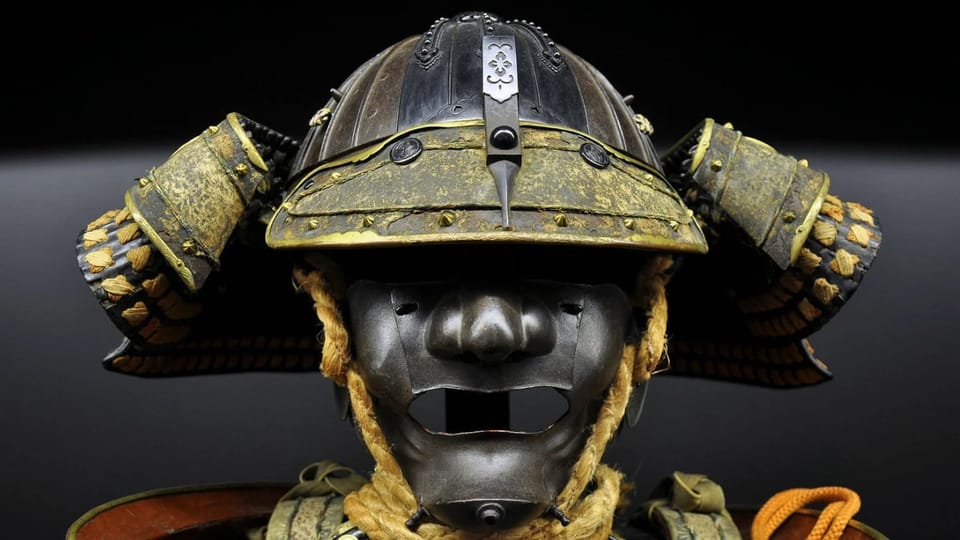Samurai: Honor, Discipline, and the Swagger of Japan’s Warrior Class

The samurai weren’t just Japan’s sword-swinging badasses; they were living, breathing symbols of discipline, loyalty, and aesthetics. Imagine warriors who didn’t just hack and slash but lived by a code so strict it’d make a Marine Corps drill sergeant weep. From the Kamakura period (1185–1333) to the Edo period (1603–1868), samurai weren’t just fighters but thinkers, poets, and political power players. Their culture seeped into every corner of their existence, shaping everything from how they ate breakfast to how they stared down death with an eerie calm.
At the heart of it all was Bushido, the “Way of the Warrior.” Think of it like their personal gospel, only instead of preaching salvation, it preached loyalty, courage, and the ultimate flex, dying with dignity. If a samurai messed up big-time, they didn’t just write an apology letter; they committed seppuku, ritual suicide. Yeah, it was that hardcore. This wasn’t just about clearing their name, it was about showing that their honor was more valuable than their life.
The samurai day didn’t start with a scroll through TikTok; it began at dawn, with sweat and discipline. Training wasn’t optional, it was survival. They drilled in kenjutsu (swordsmanship), kyudo (archery), and even judo—a mix of ballet and beating someone senseless. Picture bamboo swords clashing, forms (kata) practiced with obsessive precision, and a whole lot of yelling.
And when they weren’t swinging swords, they sat still, meditating like stone-cold monks. This wasn’t some New Age self-care, it was Zen Buddhism, teaching them to clear their minds and get zen with the idea of getting their heads lopped off someday.
Forget steak dinners or Michelin-starred sushi. A samurai’s meal was as stripped-down as their life: rice, miso soup, pickled veggies, and maybe a little fish if they were lucky. The food wasn’t about indulgence; it was about fuel. And don’t even get started on the tea. The chanoyu, or tea ceremony, was where samurai went from warriors to Zen artists, appreciating the beauty of simplicity in a cup of green tea.
Samurai didn’t just toss their swords in the corner after a battle. Every morning, they’d sit down and polish their katana like it was a priceless artifact. The sword wasn’t just a weapon; it was their soul. Literally. They’d sharpen the blade, check their armor for dents, and get themselves into the mindset that if today were their last, they’d go out swinging.
When they weren’t busy slicing enemies in half, samurai were basically feudal CEOs. They managed land, collected taxes, and kept their territories running smoothly. These weren’t illiterate meatheads; they were educated in Confucian philosophy and Chinese classics, making them as comfortable with a scroll as with a sword. In the peaceful Edo period, many of them swapped the battlefield for the boardroom, trading their armor for bureaucratic robes.
Family life for the samurai was all about duty. The men were out preserving the family name—sometimes through bloodshed, sometimes through paperwork—while the women ran the household with precision and, occasionally, weapons training. That’s right; samurai wives weren’t just sitting around weaving baskets; many of them mastered the naginata (polearm) and archery to defend the homestead.
Marriage wasn’t about romance, it was a power move. Alliances, politics, and family honor were at the forefront, and love, if it existed, was just the cherry on top.
For a group of dudes whose main job was killing, samurai were surprisingly artistic. They wrote poetry, painted, and performed in Noh theater. Poetry, especially haiku and tanka, was their way of getting philosophical about life, death, and everything in between. Death poems before battle? Classic samurai move. It wasn’t just words, it was existentialism with a bloody edge.
Samurai didn’t just believe in swinging swords; they believed in the power of the spirit. Zen Buddhism gave them a calm, clear mind, while Shinto rituals connected them to their ancestors and the natural world. A samurai wasn’t just a warrior; they were a spiritual seeker, balancing life’s chaos with meditation and a healthy respect for the unknown.
When it came time to fight, samurai didn’t just charge in screaming. They prepared with rituals, prayers, and a lot of mental focus. Armor wasn’t just for protection, it was a statement. Elaborate designs, fierce masks, and battle flags turned them into walking symbols of terror and power. And on the battlefield? It was all about honor. Duels were fair, and excessive cruelty was frowned upon.
Even samurai needed to blow off steam. Falconry, horseback riding, and kemari (a soccer-like game) were some of their go-to hobbies. These weren’t just fun and games, they were about sharpening skills and bonding with their comrades.
The samurai lifestyle couldn’t last forever. During the Edo period, peace turned them from warriors into glorified pencil-pushers. By the Meiji Restoration, the samurai were all but obsolete, their swords replaced by Western-style rifles and bureaucracy. But their legacy? That stuck around. Samurai ethos still fuels everything from martial arts to Japan’s business world.
The samurai weren’t just fighters, they were philosophers, poets, and warriors rolled into one. They lived and died by a code that made them some of the most disciplined badasses in history. Their lives were a balancing act of brutal combat, refined culture, and spiritual depth, proving that being a warrior isn’t just about swinging a sword, it’s about living with purpose and dying with dignity.
